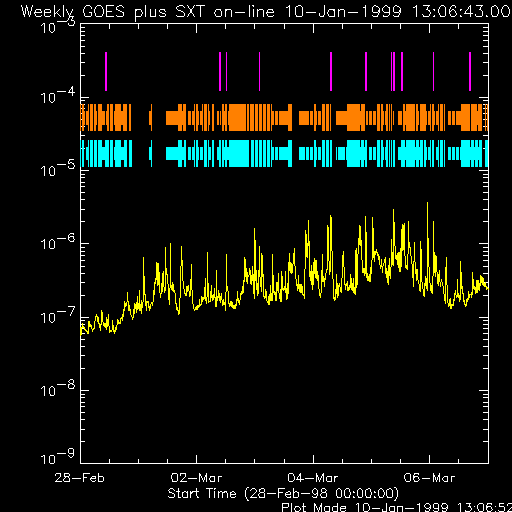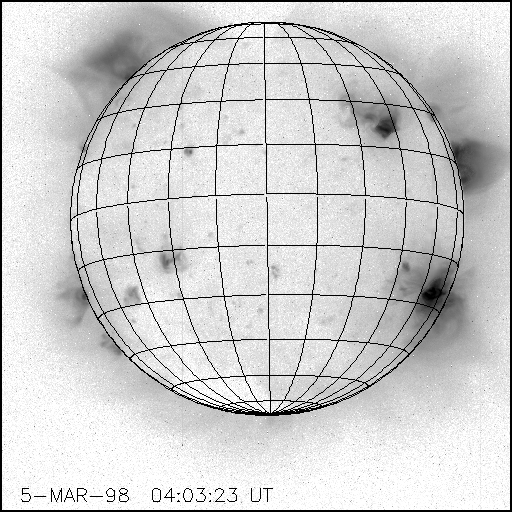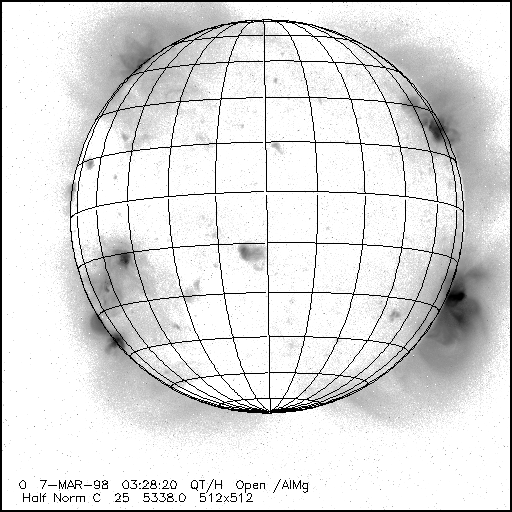
(Week 10, 1998)
6-Mar-98 UT
The SXT instrument continued to operate without problems, despite the possibility of attitude control confusion due to the very deep solar eclipse. See the weekly operations report for details. The GOES time series for the current week (updates automatically):

In the display above, and you can click to enlarge it, the colored lines show the times of SXT images that currently are on line at ISAS. Long lines are high telemetry rate, normally high resolution; short lines are medium telemetry rate. The purple lines show where Yohkoh entered flare mode. This sometimes (often?) does not happen when it should, especially if Yohkoh happens to be in orbit night! The scale is too compressed here to be able to see individual data, but the times of the individual images are actually being shown. Most of the gaps will be filled in when the NASA telemetry arrives. The yellow line shows the GOES low channel flux. Since this is an expert audience, it can figure out the A, B, C, M, X levels without further help!
The image below shows an extremely large-scale postflare loop system that apparently arose in an active region just crossing the E limb at the amazing latitude N48! Please see Pat McIntosh's commentary for details. From the SXT point of view, the structure you can see at the NE limb is an extremely large-scale post-flare loop system seen side-on, with a nice cusp structure at the south end of the "Conestoga wagon" arcade. Probably a huge CME erupted sideways from this flare - let us check the LASCO data.

Note that (in spite of Pat's comment!) as of our last standard image before the weekend, the NE region still did not outweigh the SW region (see image below). If it does develop substantially and flare, SXT may not be able to observe it because it is too far north for the on-board search algorithm. This is an extremely rare phenomenon.

For those of you who have tuned in just to see the beautiful Yohkoh eclipse movies, please check here. Data from all three of the episodes have now been received from the NASA groundstations and reduced.